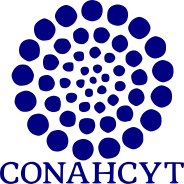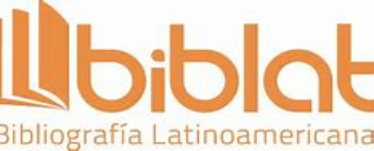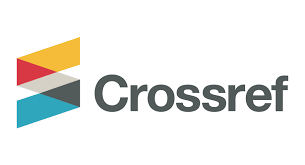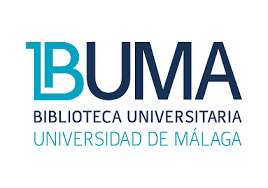ANTI-INFLAMMATORY ACTIVITY OF CRITONIA AROMATISANS AND MONTANOA GRANDIFLORA LEAVES EXTRACTS, PLANTS USED IN MAYAN TRADITIONAL MEDICINE TO TREAT INFLAMMATION
DOI:
https://doi.org/10.18387/polibotanica.43.13Palabras clave:
Critonia aromatisans, Montanoa grandiflora, Inflammation, Carrageenan, Nitric Oxide, MacrophagesResumen
El objetivo del estudio es investigar las propiedades antiinflamatorias de extractos de Critonia aromatisans y Montanoa grandiflora, dos especies nativas comunes utilizadas en ungüentos tradicionales mayas para tratar la inflamación, dolor en las articulaciones y el reumatismo. Las propiedades antiinflamatorias de extractos metanol/acetonitrilo y n-hexánicos de hojas fueron evaluados in vitro e in vivo. Los extractos de C. aromatisans y M. grandiflora disminuyeron la producción de óxido nítrico (NO) inducida por lipopolisacárido (LPS) de manera dependiente de la concentración sin afectar la viabilidad celular. Los extractos de C. aromatisans, a dosis de 200 mg/kg exhiben actividad antiinflamatoria sustancial en el ensayo de edema plantar inducido por carragenina y en el ensayo de inhibición de edema de la oreja inducido por TPA con una reducción en la inflamación de 90 y 80%, respectivamente. Estos resultados validan los usos tradicionales de las comunidades mayas que avalan el uso de esta especie para el tratamiento de la inflamación.Referencias
Ahmed NA, Christou NV, Meakins JL. 1995. The systemic inflammatory response syndrome and the critically ill surgical patient. Curr Opin Crit Care 1: 209.
Azadmehr A, Afshari A, Baradaran B, Hajiaghaee R, Rezazadeh S, Monsef-Esfahani H. 2009. Suppression of nitric oxide production in activated murine peritoneal macrophages in vitro and ex vivo by Scrophularia striata ethanolic extract. J Ethnopharmacol 124: 166-169.
Boughton-Smith INK, Deakin AM, Follenfant RL, Whittle BJR, Garland LG. 1993. Role of oxygen radicals and arachidonic acid metabolites in the reverse passive Arthus reaction and carrageenin paw oedema in the rat. Br J Pharmacol 110: 896-902.
Ding AH, Nathan CF, Stuethr DJ. 1988. Release of reactive nitrogen intermediate and reactive oxygen intermediates from mouse peritoneal macrophages. Comparison of activating cytokines and evidence for independent production. J Immunol 141: 2407-2412.
Gallin J.I, Snyderman R., (Eds). Inflammation: Basic Principles and Clinical Correlates. 3d ed. Lippincott Williams & Wilkins Philadelphia; 1999, p. 1-4.
Green LC, Wagner DA, Glogowski J, Skipper PL, Wishnok JJ, Tannebaum SR. 1982. Analysis of nitrate, nitrite and (15 N) nitrate in biological fluids. Anal Biochem 126: 131–138.
Guzik TJ, Korbut R, Adamek-Guzik, T. 2003. Nitric oxide and superoxide in inflammation and immune regulation. J Physiol Pharmacol 54: 469-87.
Kim D, Park D, Kyung J, Yang YH, Choi1 EK, Lee YB, Kim HK, Hwang BY, Kim YB. 2012. Anti-inflammatory effects of Houttuynia cordata supercritical extract in carrageenan-air pouch inflammation model. Lab Anim Res 28(2): 137-140.
MacMicking J, Xie QW, Nathan C. 1995. Nitric oxide and macrophage function. Annu Rev Immu 15: 323-350.
Méndez-González M, Durán-García R, Borges-Argáez R, Peraza-Sánchez S, Dorantes-Euan A, Tapia-Muñoz JL, Torres-Avilez W, Ferrer-Cervantes M. 2012. Flora medicinal de los Mayas peninsulares. [Medicinal flora of peninsular Mayas]. Centro de Investigación Científica de Yucatán, A.C., Fordecyt-Conacyt,Fomix, Pronatura Península de Yucatán Mérida, Yucatán, México. p. 81.
Nishizuka Y. 1992. Intracellular signaling by hydrolysis of phospholipids and activation of protein kinase C. Science 258: 607–614.
Norma oficial Mexicana NOM-062- ZOO. 1999. Especificaciones técnicas para la producción, cuidado y uso de los animales de laboratorio [Technical specifications for production, care and use of laboratory animals] http://www.senasica.gob.mx/?doc=743 [Consulted July 17, 2010].
OECD. 2001. Guideline for Testing of Chemicals: Acute Oral Toxicity-Acute Toxic Class Method. http://www.oecd.org/chemicalsafety/risk-assessment/1948370.pdf [Consulted July 17, 2010].
Pandith H, Zhang X, Thongpraditchote S, Wongkrajang Y, Gritsanapan W, Joon-Baek S. 2013. Effect of Siam weed extract and its bioactive component scutellarein tetramethyl ether on anti-inflammatory activity through NF-κB pathway. J Ethnopharmacol 147: 434-441.
Pérez-Amador MC, Munoz V, Noyola A. 2006. Essential oil and phytotoxic compounds in Clibadium surinamens L. and Montanoa grandiflora D.C. (Asteraceae). Rev int Bot Exp 75: 145-150.
Pérez-García F, Marin E, Parella T, Adzet T, Canigueral S. 2005. Activity of taraxasteryl acetate on inflammation and heat shock protein synthesis. Phytomedicine 12: 278–284.
Quijano L, Calderón JS, Gómez GF. 1984. The crystal structure of 6-epi-desacetyllaurenobiolide, a germacra-1(10),4-diene-12,8α-olide from Montanoa grandiflora. Phytochemistry 23(9): 1971 – 1974.
Roig JT. 1974. Plantas medicinales, aromáticas o venenosas de Cuba. [Medicinal plants, aromatic or poisonous]. Instituto del Libro, Habana, Cuba, p. 949.
Weinstein IB, Lee LS, Fisher PB, Mufson A, Yamasaki H. 1979. Action of phorbol esters in cell culture: mimicry of transformation, altered differentiation, and effects on cell membranes. J Supramol Struct 12(2):195–208.
Winter CA, Risley EA, Nuss GW. 1962. Carrageenan-induced oedema in hind paw of the rats as an assay for anti-inflammatory drugs. Proc. Soc. Exp. Biol. Med. 111: 544–547.
Zuther JE. 2009. Lymphedema Management: The Comprehensive Guide for Practitioners. 2d ed. Geord Thieme verlag, Stuttgard Germany, p. 171.
Descargas
Archivos adicionales
Publicado
Número
Sección
Licencia

Polibotánica por Departamento de Botánica de la Escuela Nacional de Ciencias Biológicas del Instituto Politécnico Nacional se distribuye bajo una Licencia Creative Commons Atribución-NoComercial-CompartirIgual 4.0 Internacional.




















